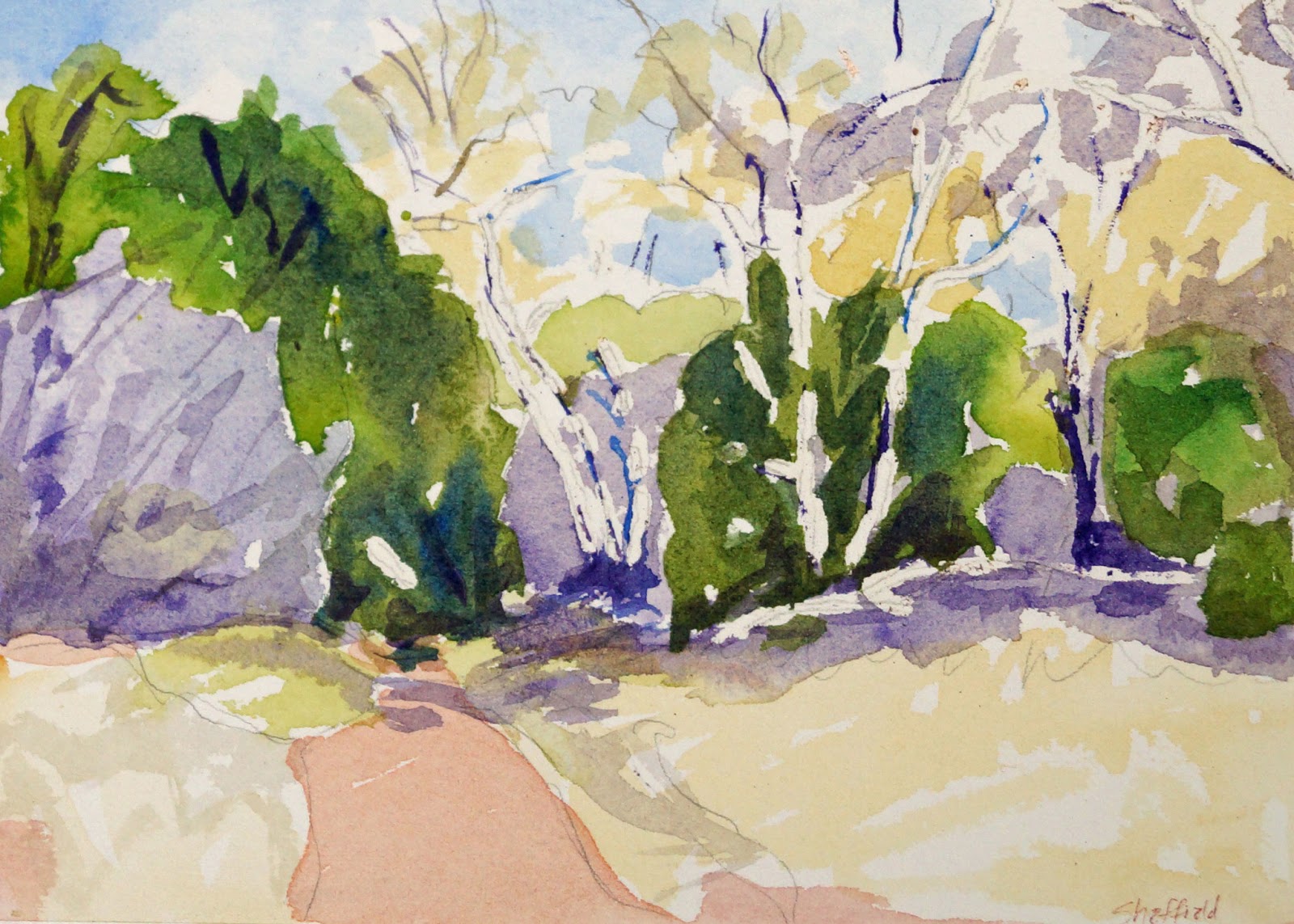It’s hot,
it’s cold, it’s elusive, and it changes everything.
I was walking
mid-afternoon in my neighborhood enjoying the autumn colors, the geese overhead
and far off dogs barking. The long
shadows reminded me of shorter days and longer nights, the loss of light. Humans have an instinctive love of light, and
if I can’t have as much in the next few months, I’ve found ways to create it in
my studio.
 |
| First Encaustic 3 3/4 x 3 3/4 wax on tile |
For many
years I’ve wanted to learn the ancient art of encaustic painting, the
application of hot pigmented wax in layers to a surface. I got my chance under the direction of Dianne
Rodwell in her Encaustic Kitchen at her Artspace Studio in Raleigh. I learned
many techniques for achieving special effects. Because beeswax is translucent,
wonderful depth is achieved as light seeps through the layers diffusing the
light and working its magic on the layers of color. This ancient art is a feast for the eye as
well as a temptation for the hand. You
want to sneak a guilty stroke of its surface.
 |
| Spring Glow #2 started with transparent oils. oil 8 x 8 |
Not long
after Diane’s class, I dove into a three day, fun packed (and
calorie-packed-yum, thanks to Lynda Chambers) discovery of transparent colors
with Dreama Tolle Perry. The jewel like transparent
colors she recommends allow light to flow through and around the painting.
Opaque paints are used carefully in the final layers of the painting and in
higher, lighter values to create a still heightened sense of light. I have rearranged my painting palette to
separate transparent colors from opaque colors to heighten my awareness during
the painting process.Here are two interpretations of the same scene, one below painted with no mind for using transparent oil colors in the first layer, and the one to the left started with transparent oils in the first layer.
 |
| Spring Glow oil 10 x 8 SOLD |
|
|
Mike Rooney CRAZY color-red block on yellow block
|
"What's in
the light? What’s in the shadow?” Mike
Rooney kept asking. In the Cape Cod
Under-painting method (CCU), you use one set of colors to paint what is in light,
one set to paint what is shadow, always being aware more of correct value, than
of correct local “real” color (what he calls “home” color). After a morning reminding us of how a color
is one value in light becomes a different value in shadow, he introduced the
application of “crazy color”. He set up
colored blocks set up on colored paper under a spotlight. Our task was to paint a picture of the block,
painting the sides hit by the spotlight using only red, yellow, orange or pink;
the sides in shadow could only be painted from the colors green, blue, purple,
or alizarin red. Mind you, this might be
a RED block! So the shadow side of a red
block might have to be purple or blue, not a dark red or dark orange. Or if it were a yellow block, the shadow side
might have to be green. C- R-A-Z-Y color!
It’s in the
next layer where the artist corrects the color, without obliterating all
of the under layer, bringing the color closer to “real” color. The eye grabs
crazy color, mixes the layers, and you see united color full of rich light or
shadow.
Light
diffused through wax, transparent colors, eye-mixing crazy color defining light
and shadow. I’ll be experimenting with
all these new ways of bringing light into my creative work. Goals set!
How will YOU capture the light during the winter months? I'd like to hear from YOU! Please leave comments and questions.
My paintings
are available at Cary Gallery of Artists 200 S. Academy St. in downtown Cary
Ashworth Village. 919-462-2035 Mon-Sat 11 am - 5:30 pm.
. . .And by contacting me at the following
links:



























